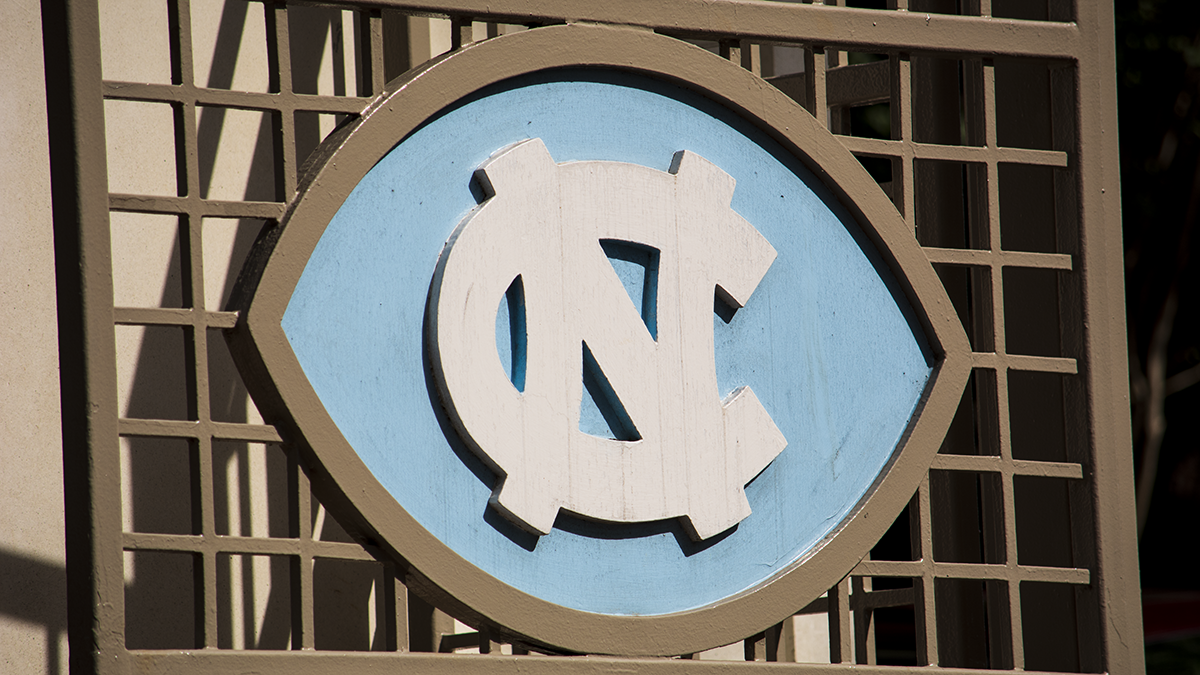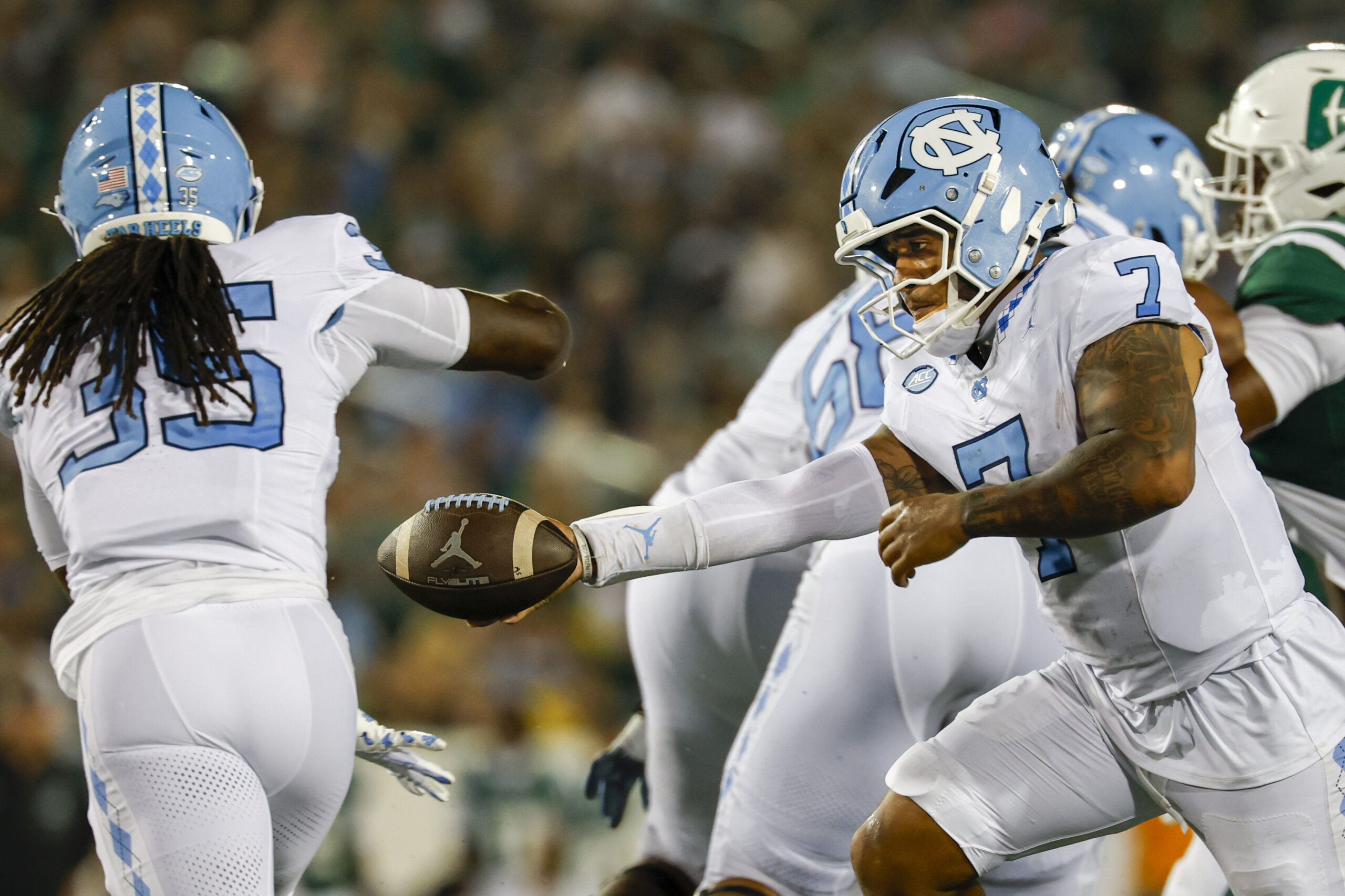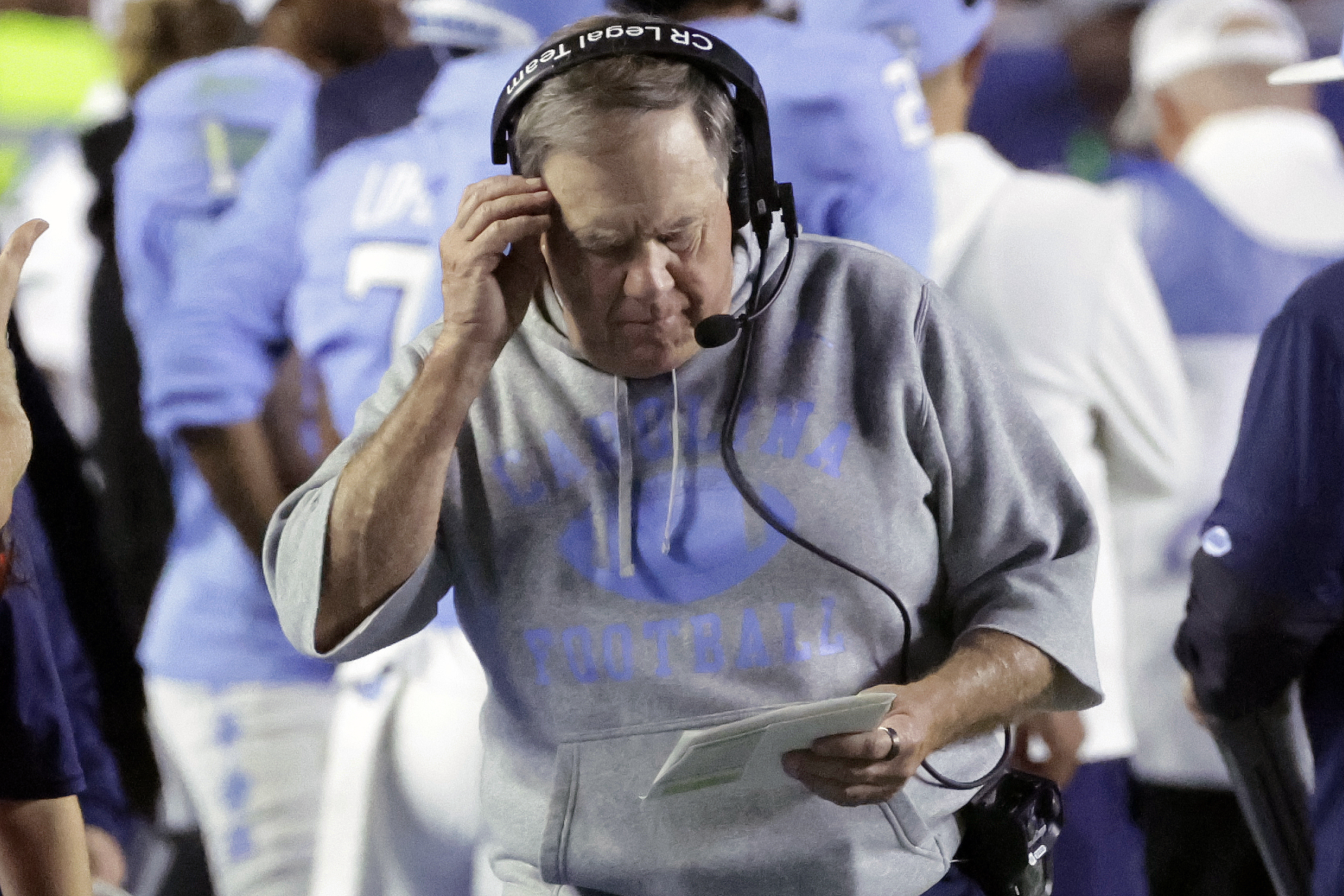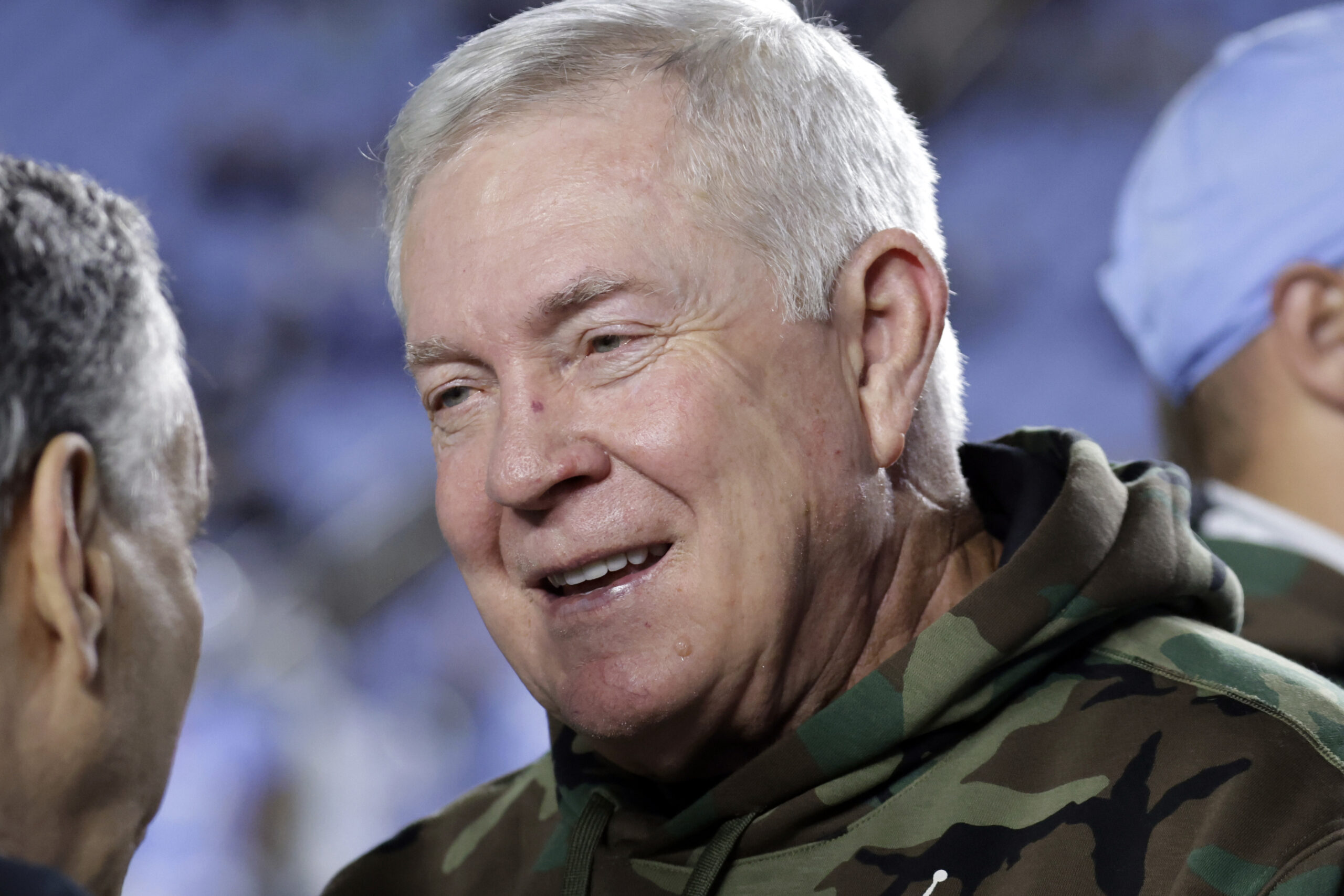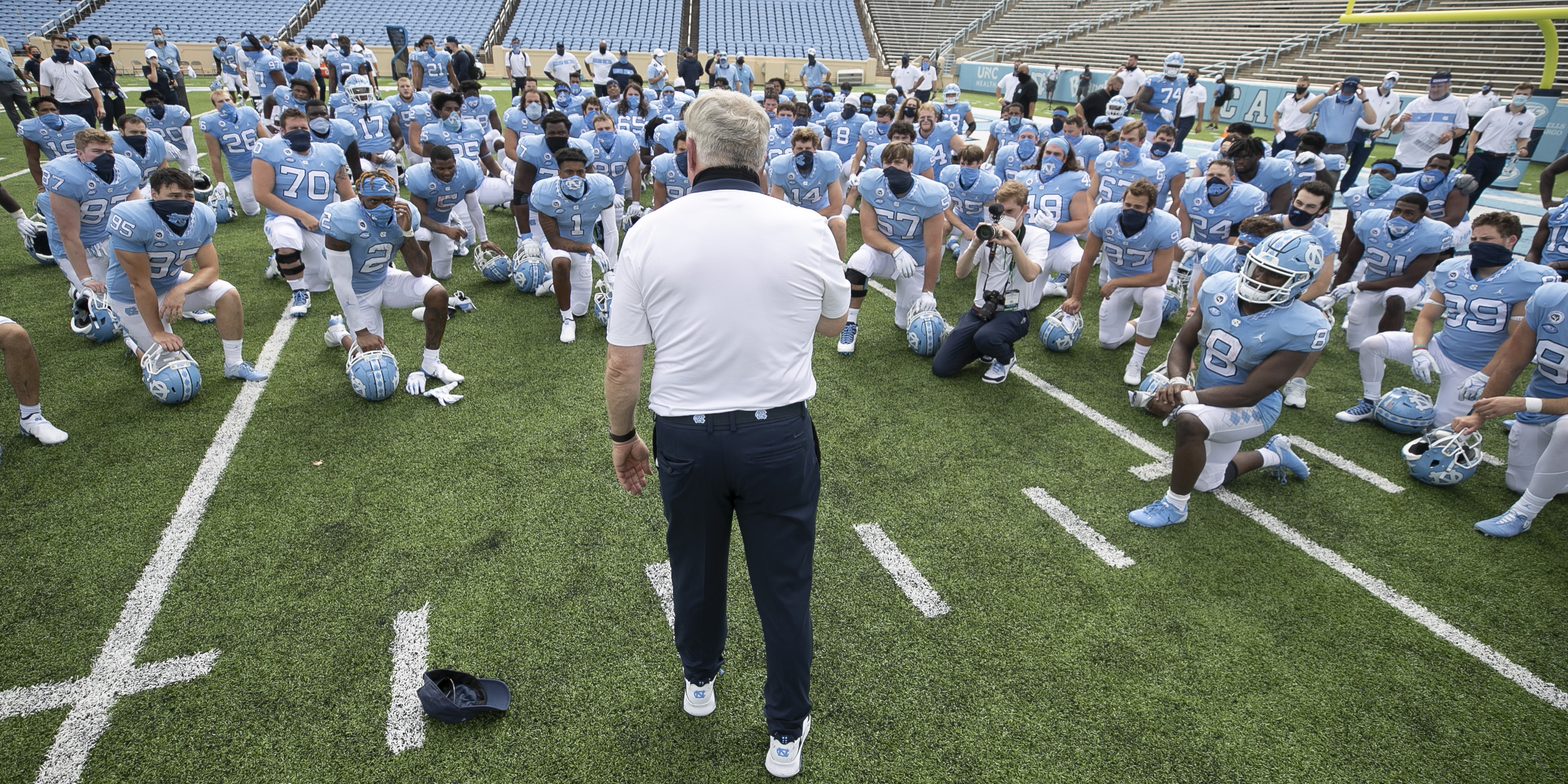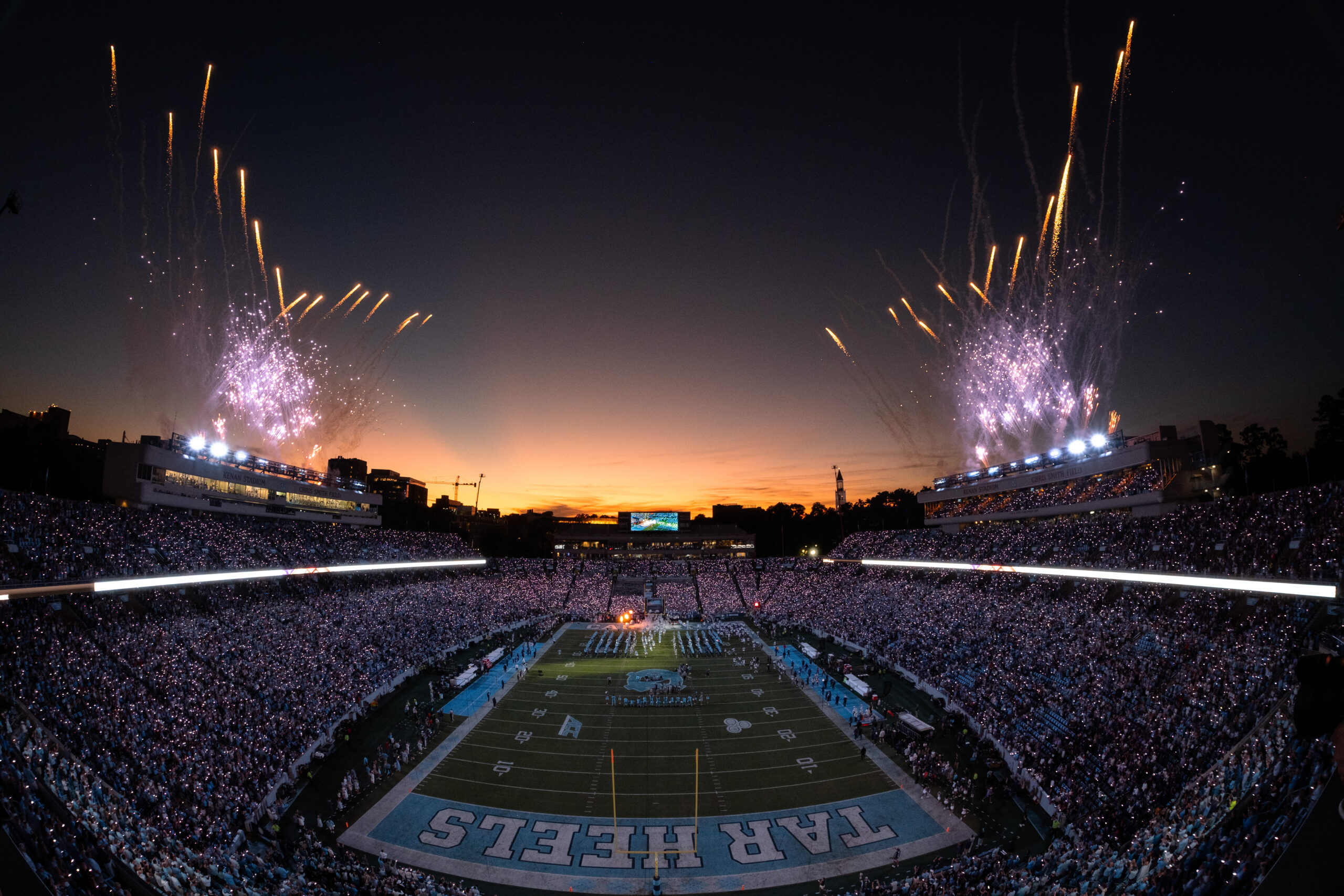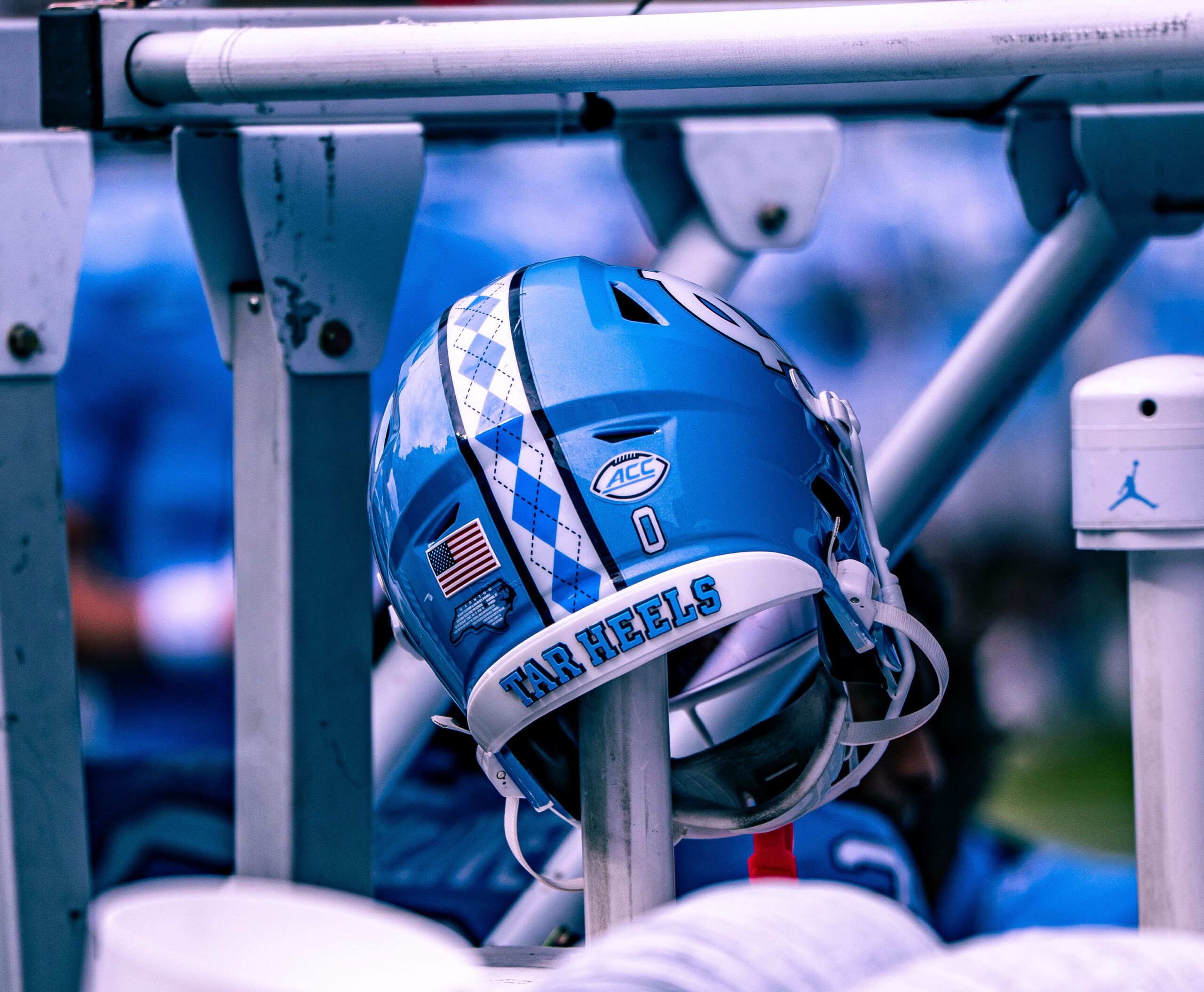With UNC football embarking on its newest head coaching era this season, let’s review the program’s leadership in modern history to add some context into Monday night’s high-profile opening game.
* * * * * *
Bill Dooley arrived in Chapel Hill as a 33-year-old guy who had played at Mississippi State and coached under his big brother Vince at Georgia, bringing a definite Southeastern Conference mentality to Tar Heel football.
After his first spring practice, which was more of a tryout for returning players, Dooley “ran off” much of an unserious squad that had been coached by Jim Hickey, who actually played golf on off days during the season. Hickey had been an assistant to Jim Tatum, whose Belichick-ian reputation created excitement from his winning a national championship at Maryland in 1953.
Ever since Tatum died in the summer of 1959 from a version of Rocky Mountain Spotted Fever, UNC old-timers have referred to their school’s oft-flagging football fortunes as a “curse of the tick.” Tatum had an overall coaching record of 100-35 with 7 ties and is buried in the old Chapel Hill Cemetery with Dean Smith and other Carolina notables.
Hickey lasted eight seasons with a record of 36-45 (including his high point, a 35-0 win over Air Force in the 1963 Gator Bowl) after South Building had brought back Tatum who had been wooed away by Maryland following one season as UNC’s 29-year-old head coach in 1942 (5-5-2) and was rebuilding the Tar Heels with back-to-back 6-4 seasons.
Dooley knew the legacy he was following and, despite going 5-15 with his first two teams, wound up winning three ACC championships as the Carolina coach. He earned the most career wins before being passed by the next two coaches of the program. Dooley’s offense was nicknamed “three yards and a cloud of dust” as he created Tailback U with six 1,000-yard seasons from running backs led by All-American Don McCauley.
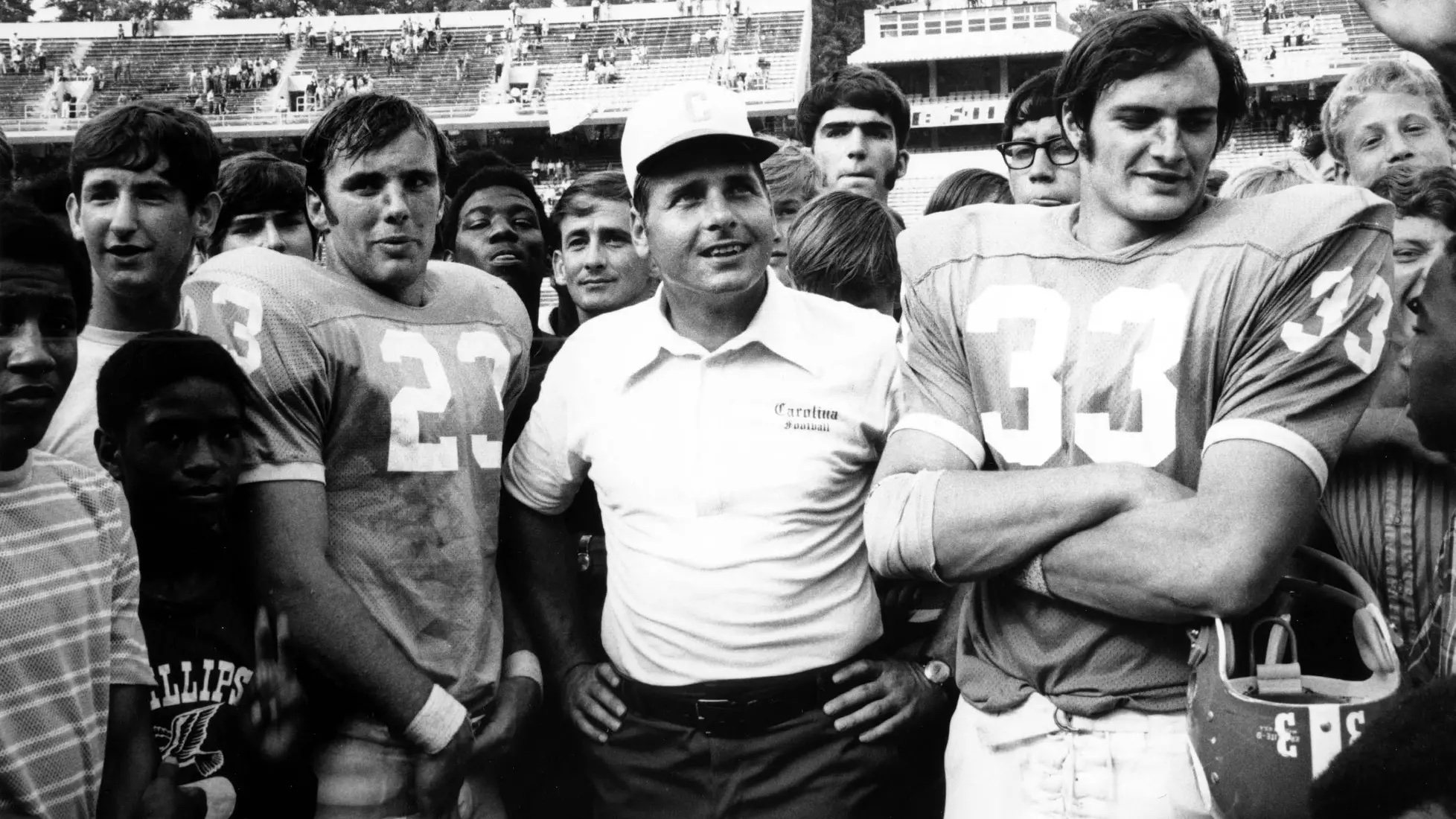
An undated photo of Bill Dooley on the field with his players and fans. (Photo via UNC Athletics Communications.)
Dooley took the Tar Heels to six bowl games, but the biggest loss of his career was when offensive lineman Bill Arnold died a week after suffering heat prostration during a sweltering summer practice in 1971. That incident spawned renowned UNC Sports Medicine while Dooley’s program fell into the hands of doctors and trainers — who set a heat ceiling for how long workouts could last and at what temperature the team had to don shorts instead of pads.
* * * * * *
After Dooley departed for Virginia Tech, Carolina scrambled to find his successor and was about to hire Art Baker from Furman. Alumni and major donors thought Baker was too small-time for the program, and athletic director Bill Cobey and assistant John Swofford found Miami of Ohio coach Dick Crum at an NCAA convention.
He got off to what one wag called a “Crummy start” in 1978, when the Heels barely beat East Carolina, whose coach Pat Dye had been interviewed but rejected by UNC despite great football chops and a magnetic personality that made him a legend in the eastern part of the state. Crum’s second team went 8-3-1 including a 24-24 tie with Dye’s ECU Pirates. The Heels won a 17-15 thriller over Michigan in the Gator Bowl on senior quarter Matt Kupec’s late touchdown pass.
In 1980, Crum had some of Dooley’s last recruiting class and more of his own, including linebacker Lawrence Taylor, an All-American and still considered one of the best defenders to ever play. That team won its first six games before a telling 41-7 loss at Oklahoma but went on to finish first in the ACC standings for the Tar Heels’ last conference championship 45 years ago, also beating Texas in the Bluebonnet Bowl.
The erudite Crum was a non-descript head coach and when wired up on the sideline with large headphones, one sportswriter called him r2d2 from Star Wars.
He had five more winning seasons but only one over his last five years before he and Swofford agreed to a divorce that paid off the coach’s contract. Crum won 72 games at UNC, three more than Dooley and held that distinction before Mack Brown surpassed him during his second tenure in Chapel Hill.
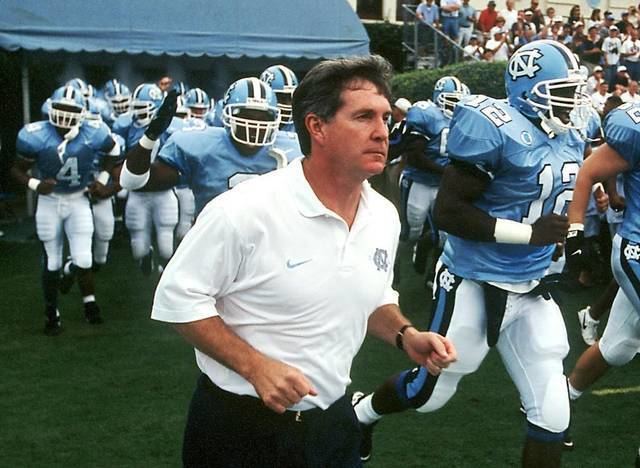
Mack Brown leads the Tar Heels out onto the field during his first coaching stint with the program. (Photo via the Associated Press.)
* * * * * *
With Crum leaving the cupboard mostly bare, Brown won every press conference and alumni meeting he attended after being hired from Tulane. He also had to talk his way around two 1-10 seasons to begin his 10-year stay in Chapel Hill. When his second team lost its season finale at home to Duke, 41-0, he vowed to never lose to Duke again — and he did not, with eight straight wins over the Devils until he returned to Carolina in 2019 and became UNC’s all-time winningest coach.
Before “coming home,” as he described it, Brown won a national championship at Texas and watched the top 10 program he left drop into the top 100 during forgettable eras of Carl Torbush, John Bunting and Butch Davis that followed. Davis had three consecutive 8-5 seasons before being dragged into the NCAA academics-athletics scandal that resulted in one NCAA sanction but cost Davis his job for various internal reasons. It happened over the summer of 2011, when defensive coordinator Everett Withers was named interim coach for that season and took the Tar Heels to their fourth straight bowl game: the Independence Bowl in Shreveport, Louisiana.

UNC head coach Larry Fedora was hired as an up-and-comer selection to lead the program, like many of his predecessors. After struggling in consecutive seasons and firing Fedora, Carolina’s leadership has favored more proven coaching commodities. (Photo via UNC Athletics)
New Athletic Director Bubba Cunningham plucked Larry Fedora from Southern Miss in the same league where Cunningham was AD at Tulsa. Fedora’s first team went 8-4 and would have advanced to the ACC championship game if not for a post-season ban by the NCAA. His 2015 team did just that by winning the ACC Coastal Division before a controversial loss to Clemson in Charlotte.
That team finished 11-3 — but Fedora only had one more winning record while losing quarterback Mitch Trubisky to the 2017 NFL Draft and not being able to replace him. Following 3-9 and 2-9 seasons with little offense or defense, Cunningham fired Fedora and rehired Brown, who had been a consultant to help Fedora find some defense. Brown still had his gift for gab and won a bowl game in his first season back before his trajectory stalled often late in games his teams were leading.
* * * * * *
Brown might still be coaching at Carolina if he had figured out how not to blow victories in the fourth quarter and, no matter how hard he tried, could not talk his way out of it. Carolina lost five straight bowl games, the last one after Bubba fired Brown, who could not or did not want to keep up with how college football was changing.
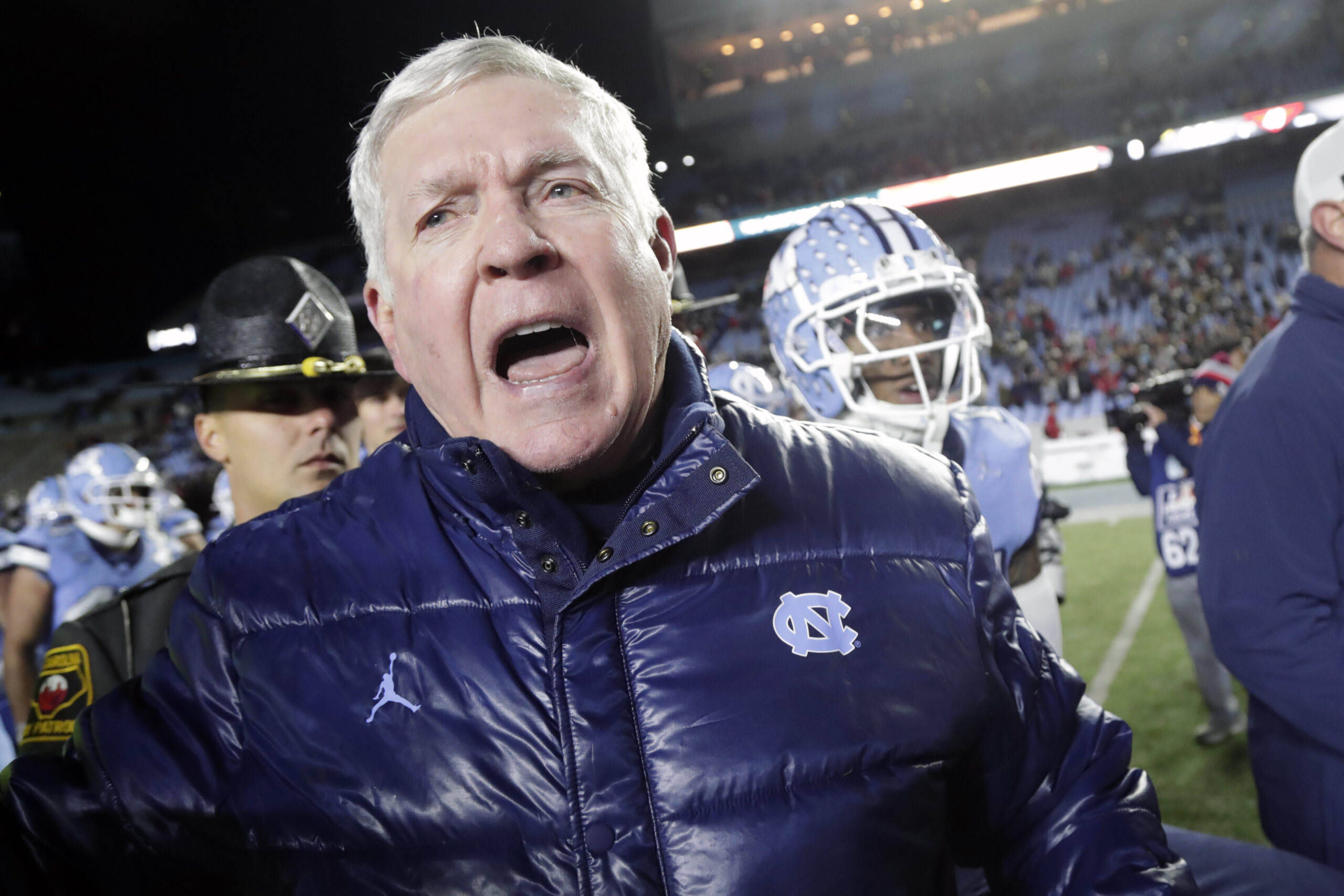
North Carolina head coach Mack Brown yells at his players to stop fighting with rival North Carolina State players on Nov. 30, 2024, in Chapel Hill, N.C. The 35-30 loss was the final game of Brown’s career with UNC, after the program announced earlier in the week it would be parting ways with the Hall of Famer. (Photo via AP Photo/Chris Seward.)
Brown had ranked teams throughout his career and rebuilt a lost Carolina program twice. The university botched his dismissal and did not give him a proper send off, allowing him to bolt angrily for the second time. He did so after the 1997 season more for not getting the raise he wanted and deserved. Brown was on the Texas sideline Saturday, kibitzing with movie star and Longhorns super fan Matthew McConaughey for their opening game loss at Ohio State.
His constant chirping about less NIL and budget money Carolina was giving his program had a lot to do with the Bill Belichick era that starts Monday night. Fifty-million-dollar Bill may not have been born for this but in the NFL encountered every type of challenge a head football coach could have in winning six Super Bowls.
He starts his college career under a different kind of pressure, with no record to show for it but the expectations already set by a hungry fan base that has been waiting since their Eras Tour began with Tatum — a coach who maybe could have done what Belichick hopes to do before his time ends.
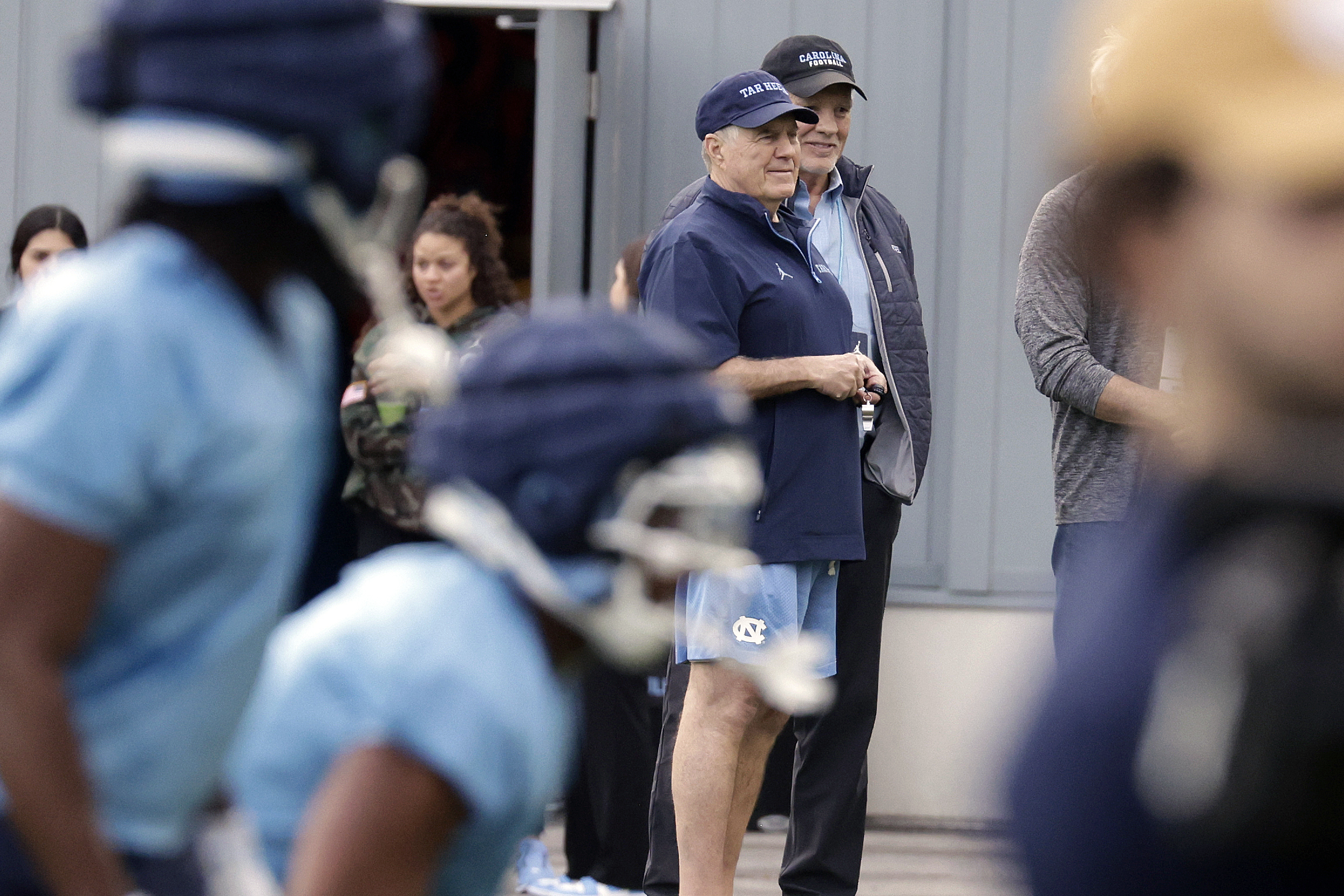
North Carolina coach Bill Belichick watches his team during a spring practice in March. Belichick will take the field for his first game as UNC’s head coach on Monday vs. TCU. (Photo via AP Photo/Chris Seward.)
Editor’s Note: This column was originally published on Sunday, Aug. 31.
Featured image via UNC Athletic Communications/Anthony Sorbellini.
 Art Chansky is a veteran journalist who has written ten books, including best-sellers “Game Changers,” “Blue Bloods,” and “The Dean’s List.” He has contributed to WCHL for decades, having made his first appearance as a student in 1971. His “Sports Notebook” commentary airs daily on the 97.9 The Hill WCHL and his “Art’s Angle” opinion column runs weekly on Chapelboro.
Art Chansky is a veteran journalist who has written ten books, including best-sellers “Game Changers,” “Blue Bloods,” and “The Dean’s List.” He has contributed to WCHL for decades, having made his first appearance as a student in 1971. His “Sports Notebook” commentary airs daily on the 97.9 The Hill WCHL and his “Art’s Angle” opinion column runs weekly on Chapelboro.Chapelboro.com does not charge subscription fees, and you can directly support our efforts in local journalism here. Want more of what you see on Chapelboro? Let us bring free local news and community information to you by signing up for our newsletter.


